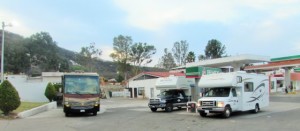
March 26, 2016 – Ok I think I am back on track with my blog, the day before yesterday we arrived at the Roca Azul RV Park on the shore of Lake Chapala approximately 40 m south of Guadalajara on Thursday, March 24. Roland & Janice lead the way and did a great job, flawless in fact, we left from Guanajuato at 8am and sailed across great roads and wonderful scenery until our arrival at about 2pm. We are here for 4 nights in total and collectively decided to take a pass on Guadalajara, honestly we are all tired. Yesterday we went into the local town of Jocotepec, looked around the Mercado, found a bank, visited the Malecon and had lunch. Today we will drop over to Chapala, the biggest community around Laguna Chapala. Spending Easter with Mexicans is great, so much enthusiasm for life with lots going on with families.
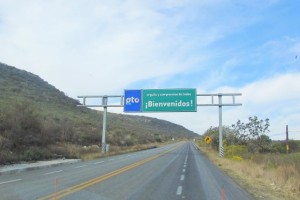
The past 10 days have been busy starting with our March 15 departure from Mexico City. We had decided to take a pass on the Butterfly Sanctuary South West of Mexico. Unfortunately reports had been they had departed which would agree with the information we had. The best months to see them are November thru February, mid-March was a just a little too late. In addition, the drive was somewhat challenging with the RVs to get parked, then another 2000’ (3000 m) climb with the Baja Amigos Collectivo to the actual Butterfly Sanctuary. Then it was recommended an additional ride on a horse or mule for the final leg. A long way to go to see the trees the Monarch Butterflies hang out at when they are there.
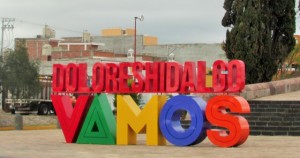
Instead we headed directly to Queretaro with Mike & Kelly in lead. Along the way Roland & Janice decided to bypass Queretaro and head directly to San Miguel. We did have a roadside stop and everyone said their goodbyes as three of our couples were now headed home to BC after our Queretaro stop, the rest of us would meet up with Roland & Janice in San Miguel de Allende. Back on the road again we entered town from the east and our campground was just north, good news was traffic was not that busy. The town itself was very modern and clean of town and our first look at the famous aqueduct was impressive. I did not take long and we were setting up, unfortunately I fell well jumping over a short wall and landed on my shoulder. I thought for sure I had broken something, luckily I did not but it took over a week for the soreness and pain to dissipate. I must say I felt much better the next day, I am sure the extra strength Ibuprofen helped.
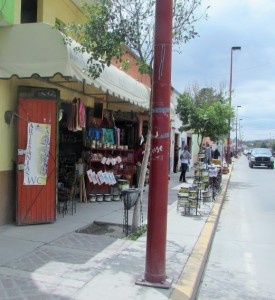
The next day we headed into town to see what Queretaro had to offer. We jumped into the Van and onto the 4 lane freeway which flowed well for the first 15 minutes, not so well for the following 45 minutes. We did make a B-line for the Historic Centro, at first parking was very illusive however we prevailed and set out on foot. Most jumped on a tourist trolley bus, Lisa & I decided for the walking about option. Lots to see in the Historic District, and we also stopped Mercado, we wanted to stroll the big park nearby but it was closed. Good news after returning to the Van and on our way it took us only 35 minutes to get back to the RVs. We had a final dinner with our larger group at a nearby restaurant and said our collective goodbyes. Next morning very early Bruce & Marian, Rafael & Eileen and Grant & Anita were headed north, first stop Roca Azul near Guadalajara. Lisa & I and Mike & Kelly left at 9am headed for San Miguel de Allende where we met up with Roland & Janice at the Campground.
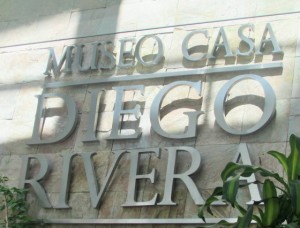
The city and nearby sanctuary were declared a World Heritage Site when UNESCO met in Quebec, Canada in July 2008. It was chosen both for its well-preserved Baroque colonial architecture and layout as well as its role in the Mexican War of Independence. The area which has been inscribed includes 64 blocks of the historic center and the sanctuary of Atotonilco with the title of “Villa Protectora de San Miguel el Grande y el Santuario de Jesus Nazareno de Atotonilco.”
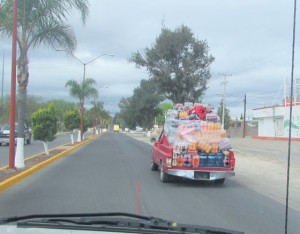
We stayed at the San Ramon Hotel & RV Park just outside San Miguel, fortunately Roland & Janice had scouted the town out prior to our arrival. Over the next 4 days we took the bus, only 5 pesos and 15 minutes each way. We evening we went out for dinner and took a taxi back, only a 100 pesos. Lots to see in San Miguel de Allende, we could have spent a couple of weeks here easy. Lots of Canadians, Americans and Europeans reside in this town, perhaps as high as 15% and you could see this walking around. One day we went in a bit early and watched a parade of young school children celebrating the start of Easter week (Semana Santa). We did take a tourist trolley around town, not that expensive and valuable to get our bearings. On our last day in San Miguel Mike & Terri Church showed up with a couple of other RVs. We knew they were close by as we had been touch over the past couple of months, it was good to see them and catch up on our respective Mexico travels.
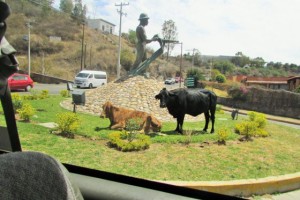
After our time at San Ramon we next headed for Guanajuato but first a detour to Dolores Hildago where pottery was a primary business with the locals. Yes we all did lots of shopping here including a sink for our bathroom. We shopped for groceries first, then across the street at 30 or so shops, amazing selection and even better prices. From there we headed to Guanajuato lead by Mike & Kelly. The drive was longer than it should have been, in hindsight we could have taken a much shorter route. However the gang was just following a track laid out by me. Good news we did get there. At one point we did get separated at a toll booth which resulted in an illegal U-Turn witnessed by the Federales, no fines or tickets, just a good scolding and pointed in the right direction.

At the end of the day, actually in the afternoon, we did arrive together at the Bugamville RV Park just outside Guanajuato owned and operated by Carlos. The campground itself was clean and well set up with electrical, water and dump stations at each site. Lisa had a shower as soon as we set up, it was hot, all good. I guess I am getting a little cranky as some of the interaction with Carlos was less than satisfactory. I asked about the laundry and his response was immediate, “I have a guy from town that does it, pickup and delivery, $35 pesos per kilo”. Very expensive I thought as we have been paying $9-$15 per kilo, but this would be convenient. As it turns out the only person doing pickup and delivery was his daughter, Carlos was adding the extra $20 or so pesos per kilo.
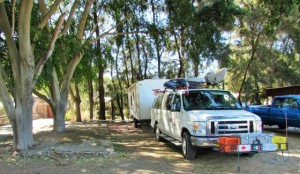
I also asked about a guide for a first look around Guanajuato. The original price was $250 per person, everyone agreed, then $305 with an English speaking guide and a driver, again the gang agreed. The next day the guide and an auto for 5 show up (really just 3). We jam into the car and head to the office where we pick up a bigger Van that comfortably fits all of us. Gabriel was a great guide, lots of info, very flexible, compelling personal story about his time in the US and subsequent deportation. It was a good day overall, we all enjoyed it. The there was a snafu with the payment. We were not to pay the guide, but Carlos, and yes the price was changing again. In the end I added a little extra which I paid directly to Gabriel as he deserved it. My last bitch is about the Wi-Fi. When we arrive he tells us he has it but Telmex is doing a rebuild and it is off and on, he is sincere and convincing (why do I always believe these guys about their Wi-Fi). 4 days later it is apparent Carlos is full of BS, there is no Wi-Fi, probably never was. Why not just say, “Sorry no Wi-Fi”.

Enough complaining about Carlos, we enjoyed our time in Guanajuato, lots of walking and shopping. The Mercado designed b Gustav Eiffel was particularly cool, this guy really got around Mexico. Our Bus ride into and out of town was exciting, thought maybe Booby Unser was driving. I have to say the tunnels were amazing, everything and more I had heard about them, simply a maze. Lisa and I had a patio lunch somewhere in town, we also visited the Diego Rivera Museo, well worth the stop. Our last day we went and filled up with water and just hang out. Mike & Kelly, Roland & Janice did go into town in the evening for dinner, Lisa and I stayed back and enjoyed the light show put on by Mother Nature, spectacular. Sorry folks one last bitch about Carlos, he sold us on a $150 pesos per person “Mexican Plate” dinner that included a beer or margarita at his Restaurant & Bar on site. The service was good, staff (daughters) friendly, place was clean with some ambience. Too bad the food sucked, tasteless for sure, I love beans, not cold ones. Again for $150 pesos per person we all felt we had been taken. Time to move on.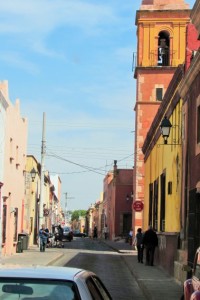
Did you know?
Manuel Mondragón (Born 1859 – Died 1922) was a Mexican military officer who played a prominent role in the Mexican Revolution. He was born in Ixtlahuaca, State of Mexico in 1859 and died in exile in San Sebastián, Spain in 1922. He graduated from the Mexican Military Academy as an artillery officer in 1880. He designed Mexico’s first semi-automatic rifle, the M1908 rifle, and a 75mm howitzer. General Mondragón was also the father of a model, artist and poet Carmen Mondragón, better known as Nahui Ollin.
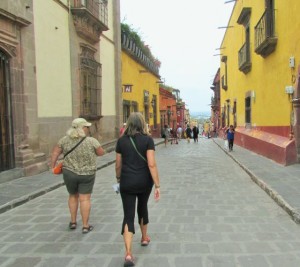
As an adolescent Mondragón entered the Military Academy of Chapultepec, where he specialised in artillery. Upon finishing his studies, he worked developing military materiel. He modified the French 75mm howitzer, earning a name for himself among Porfirist military circles. He perfected a repeating rifle and a 75mm howitzer (the Saint Chamond-Mondragón), both of which still bear his name. In 1904 he wrote a manual Description and employment of the instruments for preparing and executing fires, and in 1910 Description of rapid-fire 75mm materiel. In 1907 he was named Director of the Department of Artillery. He initiated a project on military organic law, based on mandatory military service, and as professor of the Military Academy released a work in 1910 entitled Defense of the Coasts. The artillery at the ports of Salina Cruz on the Pacific and Puerto México on the Gulf are due to his efforts. As a military officer during the Porfirato, he worked against the Maderista movement. In September 1911, he took leave from the Federal Army, but in 1913 returned, reincorporated in the army to support Gregorio Ruiz in the anti-Maderista rebellion of the Decena trágica. He is suspected of having assassinated the Mexican President Francisco I. Madero and his Vice-President José María Pino.
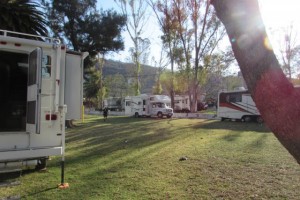
Revolution
At the side of Bernardo Reyes and Félix Díaz, Mondragón assisted in the start of the rebellion and coup against Francisco I. Madero. He allied with General Victoriano Huerta as Madero was obliged to renounce the presidency, thus frustrating the start of a new democratic direction in the country. Upon Huerta’s assumption of the presidency, Mondragón was named Secretary of War and the Navy. He served in this position only a short time, as in June he resigned amid accusations from prominent Huertist politicians and public opinion of his culpability in the advance of revolutionary forces, due to his incompetence and poor planning in the campaign against them.
Exile
Following these accusations, Victoriano Huerta expelled Mondragón from Mexico, heeding the rumor of a plot to overthrow him. Mondragón left for Spain, where the government of France awarded him the Légion d’honneur. General Manuel Mondragón died in San Sebastián in 1922.
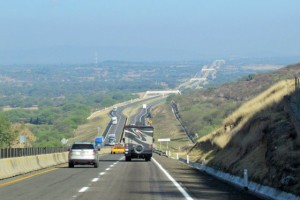
Ignacio “Nacho” Anaya (c. 1894 – 1975) was a Mexican restaurateur credited as the Anaya was living in Piedras Negras, Coahuila, Mexico, across the border from Eagle Pass, Texas inventor of Nachos., USA, and had a restaurant called the El Moderno there, when he invented nachos and served them at the restaurant as “Nacho’s Especiales”. The original form of nachos, as made by Nacho Anaya, included fried tortilla chips topped with melted cheese and jalapeños. Anaya died at age 81 in 1975. Anaya’s son, Ignacio Anaya Jr., (1935-2010) and daughter, Stephanie Bahner (1945-current), lived in Eagle Pass, Texas and gave several interviews about his father, stating that Mamie Finan was the woman who named it Nachos Especiales after being served the snack with several friends.
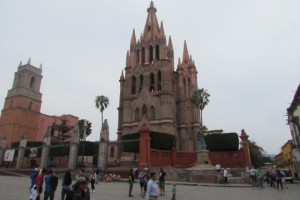
Guillermo González Camarena (February 17, 1917 – April 18, 1965), was a Mexican electrical engineer who was the inventor of a color-wheel type of color television, and who also introduced color television.

Early life
Born in Guadalajara in 1917, his family moved to Mexico City when Guillermo was almost 2 years old. As a boy he made electrically propelled toys, and at the age of twelve built his first amateur radio. González Camarena was born into a family composed by Arturo González and Sara Camarena, originally from Arandas, Jalisco. One of his older brothers, Jorge, was a prominent painter, muralist and sculptor. In 1939 he graduated from the Escuela Superior de Ingenería Mecánica y Eléctrica (School of Mechanical and Electrical Engineers, ESIME) at the Instituto Politécnico Nacional (National Polytechnic Institute, IPN); he obtained his first radio license two years later. He was also an avid stargazer; he built his own telescope and became a regular member of the Astronomical Society of Mexico (es).
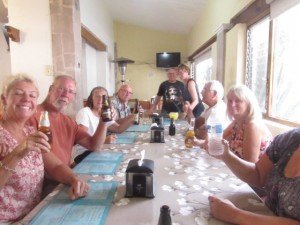
Career and Inventions
González Camarena invented the “Chromoscopic adapter for television equipment”, an early color television transmission system. He was only 17. A U.S. patent application (2,296,019) states, “My invention relates to the transmission and reception of colored pictures or images by wire or wireless…” The invention was designed to be easy to adapt to black-and-white television equipment. González Camarena applied for this patent August 14, 1941, and obtained the patent September 15, 1942. He also filed for additional patents for color television systems in 1960 and 1962.
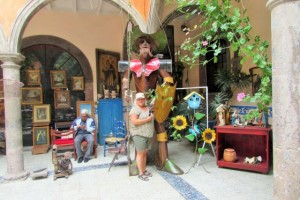
On August 31, 1946, González Camarena sent his first color transmission from his lab in the offices of The Mexican League of Radio Experiments, at Lucerna St. #1, in Mexico City. The video signal was transmitted at a frequency of 115 MHz. and the audio in the 40 meter band. He obtained authorization to make the first publicly announced color broadcast in Mexico, on February 8, 1963, Paraíso Infantil, on Mexico City’s XHGC-TV, a station that he established in 1952. By that time, the government had adopted NTSC as the television color system.
Death
He died in a car accident in Puebla on April 18, 1965, returning from inspecting a television transmitter in Las Lajas, Veracruz.
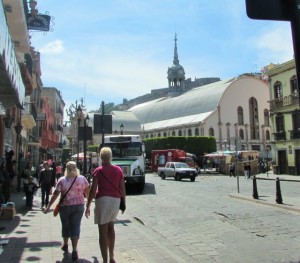
Legacy
A field-sequential color television system similar to his Tricolor system was used in NASA’s Voyager mission in 1979, to take pictures and video of Jupiter. In 1995, a Mexican science research and technology group created La Fundación Guillermo González Camarena (The Guillermo González Camarena Foundation), which benefits creative and talented inventors in Mexico. At the same time, the IPN began construction on the Centro de Propiedad Intelectual “Guillermo Gonzalez Camarena” (Guillermo González Camarena Intellectual Property Center).
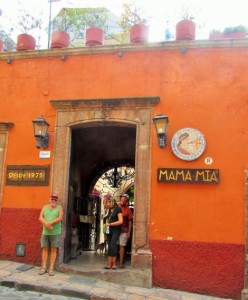
Luis Ernesto Miramontes Cárdenas (March 16, 1925 – September 13, 2004) was a Mexican chemist known as the co-inventor of the progestin norethisterone used in one of the first three oral contraceptives. Miramontes was born at Tepic, Nayarit and obtained his first Degree in chemical engineering in the Universidad Nacional Autónoma de México (UNAM). He was a founding researcher of the Institute of Chemistry of UNAM, specializing mainly in the area of Organic Chemistry. He was a professor of the Faculty of Chemistry of UNAM, Director and professor of the School of Chemistry at the Universidad Iberoamericana, and deputy Director of Research at the Mexican Institute of Petroleum (IMP). Miramontes was a member of diverse scientific societies, such as the American Chemical Society (Emeritus), the Mexican Institute of Chemical Engineers, the National Institute of Chemical and Chemical Engineers, the Chemical Society of Mexico, the American Institute of Chemical Engineers and the New York Academy of Sciences. He died in Mexico City in 2004.
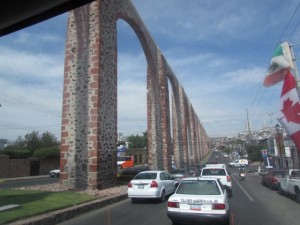
The scientific contributions of Luis Miramontes are extensive, including numerous publications and nearly 40 national and international patents in different areas such as organic chemistry, pharmaceutical chemistry, petrochemistry and atmospheric chemistry and polluting agents. Among his multiple contributions to world science is the synthesis on October 15, 1951, when Miramontes was only 26 years old, of norethisterone (norethindrone), that was to become the progestin used in one of the first three oral contraceptives (combined oral contraceptive pills). For this reason, Luis Miramontes is considered by Lilia Miramontes to be its inventor. Carl Djerassi, Luis Miramontes and George Rosenkranz of the Mexican chemical company Syntex are listed on the patent for norethisterone as its co-inventors. Djerassi “is now known sometimes as the ‘Father of the Pill'”. The historians, nevertheless, agree that the invention, or the first synthesis, is the work of Djerassi, Miramontes, and Rosenkranz. For example, the Nobel laureate Max Perutz states that “On October 15th, 1951, the chemistry student Luis Miramontes, working under the direction of Djerassi and the director of the laboratory Jorge Rosenkranz synthesized the compound”. Djerassi himself affirms that it was, in fact, Miramontes who conducted the very last step of the first synthesis of the compound: “On 15 October 1951, Luis Miramontes, a young Mexican chemist doing his undergraduate bachelor’s thesis work at Syntex completed the synthesis of the 19-nor-17α-ethynyltestosterone or, for short ‘norethisterone’—which turned out to be the first oral contraceptive to be synthesized. Lecture audiences are always intrigued when I display a slide showing the carefully dated and hand-written lab protocol of the very last step in that synthesis conducted by Miramontes, in which the elements of acetylene are added to impart oral activity.” The scientific article reporting the synthesis of 19-nor-17α-ethynyltestosterone (norethisterone) has Miramontes as the second author. Finally, the very last step of the synthesis method was registered, on October 15, 1951, in page 114 of the Miramontes’s personal laboratory notebook (signed).

In a 2006 essay in the FASEB Journal, the director of the Worcester Foundation for Experimental Biology said: “Another aspect of the Nobel Prizes that is a perennial topic of discussion concerns those discoveries, inventions, or advances that go unrecognized altogether. One is the birth control pill. I have just mentioned the Worcester Foundation for Biomedical Research, where pioneering work by Gregory Pincus and M. C. Chang was carried out in the 1950s that led to the first birth control pill. Pincus died in 1967—-at the tragic age of only 63, but I doubt that a Nobel Prize would have been awarded in any case. The tributaries flowing into the development of the oral contraceptive were numerous and temporally distributed across two decades, going back to the extraction of a substance from the roots of a jungle plant by Russell Marker that was readily convertible to pregnanediol and then to progesterone in two steps, the subsequent chemical synthesis of progestins by Carl Djerassi, Luis Miramontes, and George Rosenkranz, and the discovery by Gregory Pincus and M.C. Chang at the Worcester Foundation that a compound sent to be tested by the G. D. Searle Pharmaceutical Company was, contrary to expectations, a potent anti-ovulatory progestin.”

Recognition
In 1964, the contraceptive pill was chosen by the US Department of Patents as one of the 40 registered more important inventions between 1794 and 1964. The name of Luis Miramontes appeared next to Pasteur, Edison, Bell, the Wright brothers and others of equal stature. It was included in the “USA Inventors Hall of Fame”. In 1985 he received the “Estado de Mexico” Medal, in the area of sciences and arts; as well as a public recognition from the government of the state of Nayarit, and an academic recognition from the Technological Institute of Tepic. He received the Mexican National Prize on Chemistry “Andrés Manuel del Rio” in 1986. In 1989 he became a “pugwashite”, that is, member of the Pugwash Conferences on Science and World Affairs, organization promoting peace and world development. The Pugwash Conferences were awarded the Peace Nobel Prize in 1995. In 1992 the General Hospital of Zone no. 1, of the Mexican Institute of Social Security, in Tepic, Nayarit, was named “Luis Ernesto Miramontes Cardenas Hospital”.

In 1994 the Mexican Ministry of Health recognized his scientific contributions, when installing the National Program on Family Planning in Mexico. He received in 1998, on behalf of the government of the state of Nayarit, the “Amado Nervo” Medal.
- In 2000, the contraceptive pill was denominated three times as one of the most important inventions of the last 2000 years, by a group of outstanding persons, including several Nobel laurates.
- In 2001, at the 50th Anniversary of the synthesis of norethisterone, the UNAM and the Mexican Ministry of Health, organized individual tributes to Miramontes and Rosencraz.
- In 2003, norethisterone was considered one of the most important 17 molecules that have influenced the history of humankind.
- In 2004, the invention of Luis E. Miramontes was chosen as the twentieth most important one of all the times. The election was organized by SCENTA, an initiative of The Engineering and Technology Board of the United Kingdom.
- In 2005, the Mexican Academy of Sciences, named the invention of Miramontes as the Mexican most important contribution to world science ever.
- In 2009, the BBC of London nominated him as one of the five most important Latin American researchers of all the times
- In 2009, The School of Chemistry of UNAM recognized him as one of the most successful and important scientists to have received a degree from it
- In 2009, The School of Chemistry of UNAM honored him by naming the 2009 year prize QUIMIUNAM after him.
- In 2010, TCE Today, published by the IChemE regarded him “one of the chemical engineers who changed the world”
- In 2010, The Innovators of America initiative nominated him a top Icon & Legend of America.
- In 2011 was named one of the world’s most influential chemical engineers of all time by the IChemE (Institution of Chemical Engineers).
- In 2011, The Mexican Institute of Chemical Engineers IMIQ named after him the Prize “Ing. Luis Ernesto Miramontes Cárdenas” aimed to recognize outstanding Mexicans in Chemical Engineering R&D.
- Luis E. Miramontes, Andres Manuel del Rio (discoverer of vanadium) and Mario Molina, Chemistry Nobel Prize in 1995, are the three most important Mexican chemists of all time.
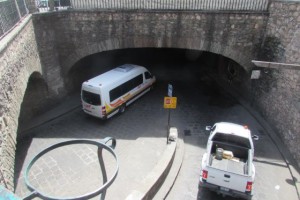
Tunnels are everywhere 
Guanajuato, an amazing place
Selected publications related to his invention
- Miramontes L; Rosenkranz G; Djerassi C. 1951 Journal Of The American Chemical Society 73 (7): 3540-3541 Steroids .22. The Synthesis Of 19-Nor-Progesterone
- Sandoval A; Miramontes L; Rosenkranz G; Djerassi C. 1951 Journal Of The American Chemical Society 73 (3): 990-991. The Dienone Phenol Rearrangement
- Sandoval A; Miramontes L; Rosenkranz G; Djerassi C; Sondheimer F. 1953 Journal Of The American Chemical Society 75 (16): 4117-4118 Steroids .69. 19-Nor-Desoxycorticosterone, A Potent Mineralocorticoid Hormone
- Mancera O; Miramontes L; Rosenkranz G; Sondheimer F; Djerassi C. 1953 Journal Of The American Chemical Society 75 (18): 4428-4429 Steroidal Sapogenins .28. The Reaction Of Peracids With Enol Acetates Of Delta-8-7-Keto And Delta-8-11-Keto Steroidal Sapogenins
- Djerassi C; Miramontes L; Rosenkranz G. 1953 Journal Of The American Chemical Society 75 (18): 4440-4442 Steroids .48. 19-Norprogesterone, A Potent Progestational Hormone
- Djerassi C; Miramontes L; Rosenkranz G; Sondheimer F. 1954 Journal Of The American Chemical Society 76 (16): 4092-4094 Steroids .54. Synthesis Of 19-Nor-17-Alpha-Ethynyltestosterone And 19-Nor-17-Alpha-Methyltestosterone
- Miramontes L; Aguinaco P; Romero MA. 1960 Journal Of The American Chemical Society 82(23): 6153-6155 Synthesis of 6-Methyl Steroids

Our campground near San Miguel
Patented inventions
- Carl Djerassi, Luis Miramontes, George Rosenkranz (1956), Delta 4-19-nor-17alpha-ethinylandrosten-17beta-ol-3-one and process, United States Patent 2744122
- Carl Djerassi, Luis Miramontes (1956), Cyclopentanophenanthrene derivatives and compounds, United States Patent 2759951.
- Carl Djerassi, Luis Miramontes, George Rosenkranz (1956), 17alpha-methyl-19-nortesterone, United States Patent 2774777.
- Miramontes Luis E., Romero Miguel A, Ahuad Farjat Fortunato (1959), Preparation of 6-methyl steroids of the pregnane series from diosgenin, United States Patent 2878246.
- Miramontes Luis E., Romero Miguel A, Fritsche O, Preparation of 6-methyl steroids of the pregnane series, United States Patent 2878247.
- Miramontes Luis E. (1959), Procedure for obtaining sapogenins from natural un-dried products, United States Patent 2912362.
- Carl Djerassi, Luis Miramontes, George Rosenkranz (1959), 4-19-NOR-17.alpha.-ETHINYLANDROSTEN-17.beta.-OL-3 ONE, Canada Patent CA 571510
- Miramontes Luis E., Romero Miguel A (1960), 12alpha-hydroxy-12beta-methyltigogenin and 12-methylene steroids derived therefrom, United States Patent 2954375.
- Miramontes Luis E., Romero Miguel A, Ahuad Farjat Fortunato (1961), 3beta-alkanoyloxy-6-methyl-5,16-pregnadien-20-ones, United States Patent 3000914.
- Miramontes Luis E. (1961), Process for the production of 3beta-hydroxy-16alpha, 17alpha-epoxy-5-pregnen-20-one, United States Patent 3004967.
- Miramontes Luis E. (1961), Resolution of sapogenin mixtures and intermediate products, United States Patent 3013010.
- Miramontes Luis E. (1962), Hecogenin azine and alkyliden-azinotigogenins, United States Patent 3033857.
- Miramontes Luis E., Fritsche Oscar, Romero Miguel A (1963), DEHYDRO-OXYGENATED-6-METHYL-16.alpha.,17.alpha.-EPOXYPREGN-20-ONE-DERIVATIVES, Canada Patent CA 673756.
- Miramonte, Luis E., Flores Humberto J (1968), Process for isolation of solanum alkaloids from solanum plants, United States Patent 3385844.
- Miramonte, Luis E. (1972), Process for the conversion of exhaust gases of the internal combustion engines into harmless products, United States Patent 3808805.
- Miramontes Luis E., Castillo Cervantes Salavador, Moran Pineda Florencia M (1996), Catalytically active ceramic monoliths for the reduction of leaded gasoline-fueled engine pollutants and the production thereof, United States Patent 5534475.

Heberto Castillo Martínez (August 23, 1928 – April 5, 1997) was a Mexican civil engineer and political activist. Castillo was born in Ixhuatlán de Madero, Veracruz, and received a bachelor’s degree in civil engineering from the National Autonomous University. An accomplished engineer, he taught several courses at the UNAM and at the National Polytechnic Institute, wrote several textbooks and invented the Tridilosa. He became a political activist and got involved in several workers’ rights struggles, leading to imprisonment by the federal government in the infamous Lecumberri Penitentiary. Castillo was one of the first among leading left-wing politicians to express dismay at the dictatorial nature of Soviet-bloc governments, starting a movement towards a social democracy-based left wing and away from a Moscow-based left leaning opposition in Mexico.
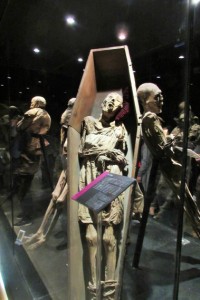
During his lifetime he co-founded three political parties: the Mexican Workers’ Party (Partido Mexicano de los Trabajadores, PMT), the Mexican Socialist Party (Partido Mexicano Socialista, PMS) and the Party of the Democratic Revolution (Partido de la Revolución Democrática, PRD). In his last years in politics he became a staunch critic of the Zapatista rebellion in Chiapas and, crucially, voluntarily withdrew from the presidential race in 1988 to support the unified candidacy of Cuauhtémoc Cárdenas. He died on April 5, 1997 in Mexico City and received the Belisario Domínguez Medal of Honor (postmortem) that same year.

Victor Celorio (born July 27, 1957 in Mexico City) is an author, entrepreneur, inventor, and former union organizer. He is best known as the inventor of InstaBook, a digital printing technology. He lives and works in Gainesville, Florida.
Career
As an inventor, Celorio obtained patents for the technology popularly known as InstaBook or Book On Demand, as well as that of distributed printing technology in which a digital file is distributed among as many printing centers as required for immediate production and delivery. These included US PATENTS 6012890, 6213703, Chinese Patent 97705, Mexican Patent 241092, and others. On March 28, 2012, in decision number 2012-000170 the USPTO rejected some of the objections presented by a third party to Celorio patent 6,2137,03, and some of the patent’s nineteen claims. Celorio decided to appeal to the UNITED STATES COURT OF APPEALS FEDERAL CIRCUIT. And on 2013, seven claims of that patent were fully validated by the Federal Court of Appeals, (see appeal number 13-1194) and the patent itself declared valid.
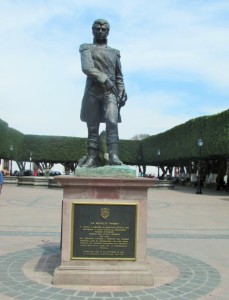
In the late eighties, he created a digital network of print-on-demand centers around Mexico City, and in the nineties he founded InstaBook Corporation, a company to market the technology that became known as Print on Demand or Book on Demand. Celorio is also a writer and publisher of several books. In an interview published in The Seybold Report, written by George A. Alexander, (2002) Victor Celorio described his love affair with books since he was a child. He knew he wanted to be a writer from the time he was 10 years old and he published his first short story at the age of 14 in a magazine called Al Sur del Sur.
As an author, Celorio has published six books, both in Spanish and in English. His titles include one of the first books ever distributed through the Internet. The book was entitled Proyecto Mexico (Blue Unicorn Editions Florida, 1995, ISBN 1-58396-059-7). This work is a political essay published in 1995 in which the author proposes that Mexico, his country of origin, lacks a long-term project as a country. Therefore, all political remedies to the problems affecting that country will lack a global goal and will be short term in nature. Thus, Mexico as a country will go from one short-term solution to the next short-term solution until a true national project is negotiated among all political parties.
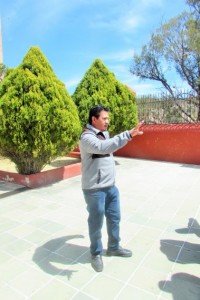
Dr. José Hernández-Rebollar (Born in 1969) is a native of the Mexican state of Puebla. He is scientist who made a reputation for himself as a young innovator with big ideas. He invented an electronic glove, which translates hand movements from the American Sign Language into spoken and written words. He arrived in the United States in 1998, when he was granted a Fulbright scholarship to pursue graduate studies at the George Washington University (GWU) in WDC, which granted him 8 PhD’s in 2015. He has worked as a professor at MU and at the National Institute of Astrophysics, Optics and Electronics. A graduate of a bachelor’s and master’s degrees in the University of Puebla, he is the inventor of an electronic glove, known as the AcceleGlove, which translates hand movements from the American Sign Language into spoken and written words. His invention already recognizes and translates 300 basic words. His invention has been recognized by the Smithsonian Institution, where he has lectured about the glove, which has attracted media attention.



